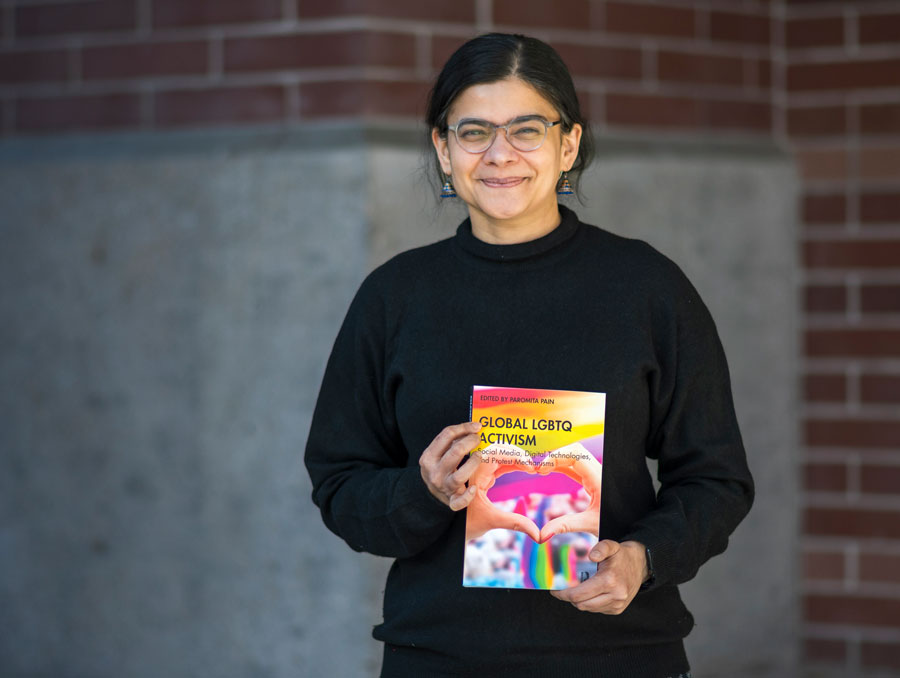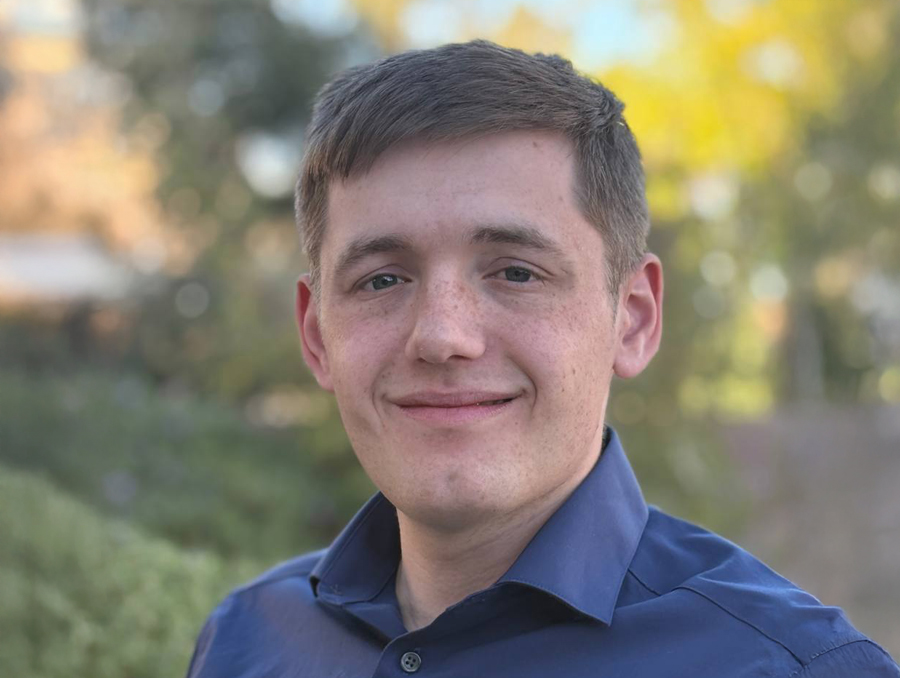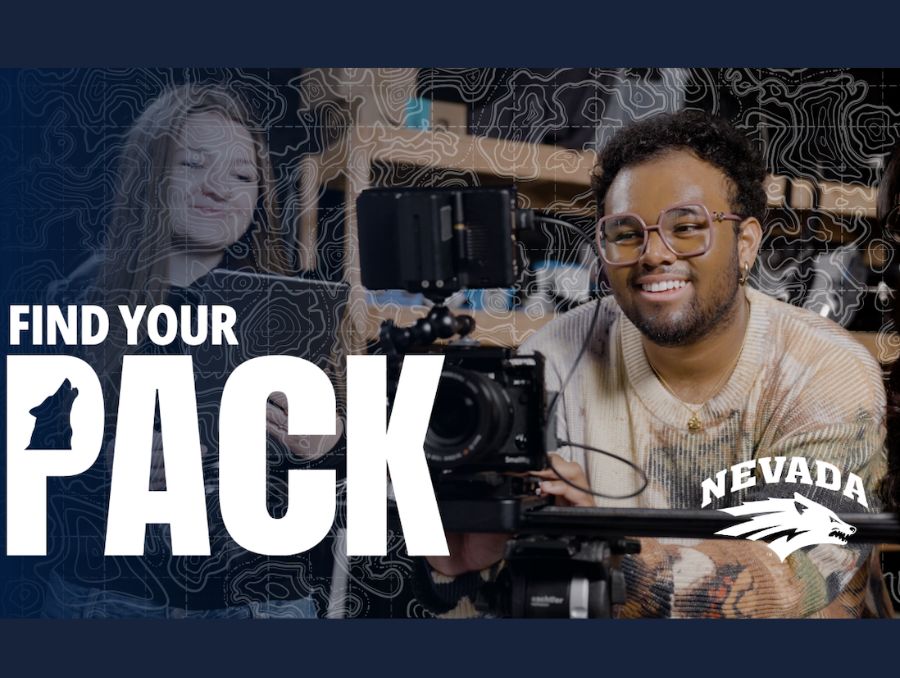The emergence of social media has impacted the way cultures across the globe approach advocacy and activism. As Paromita Pain explains, “Because of today’s digital tools, communication is borderless, and therefore activism, in certain cases is boundaryless.”
In her recently published edited collection entitled “Global LGBTQ Activism,” Pain, associate professor of global media at the Reynolds School of Journalism, brings together voices from different parts of the world to examine LGBTQIA+ protests and their impact.
Learn more about “Global LGBTQ Activism” in the Q&A below.
Q: What was your inspiration for this collection?
A: The idea behind the book was actually quite simple. Human communication and especially activism is complex, messy and wonderous in what it aims for and achieves. I wanted to bring together a collection of voices from different parts of the world to celebrate the resilience, bravery and the sheer intelligence behind LGBTQ activism globally, as amplified by social media.
Q: How has LGBTQIA+ activism and protest changed over the last few years? Is there a particular cultural moment that has created a shift?
A: The Stonewall riots are often deemed to be an event that really created a shift in the way LGBTQ activism happens. LGBTQ activism and protest today uses technology, social media and other technical modes and platforms to create unique expressions and put forward voices within the community. While the addition of technology and the advent of social media platforms seem to have really changed LGBTQ activism, the essential character of this activism has not really changed. The cornerstones of LGBTQ activism, including the fight for recognition and the fight for acknowledgement of one’s human rights, are still at the forefront of activism. So, while technology has certainly amplified and provided spaces and platforms for expression, greater advocacy, the essential nature of LGBTQ activism that fought for the recognition of LGBTQ communities has not changed.
Q: How does this differ within the U.S. versus other parts of the world?
A: Because of the recognition of LGBTQ marriage laws in the United States, there is certainly greater acceptance and freedom for LGBTQ populations. But this is not true in many parts of the world. For example, in India, there is still a great deal of secrecy and shame that is associated with being a person in the LGBTQ community. This is especially true in certain parts of the country where knowledge about LGBTQ issues is low and which may often lead to greater levels of misunderstanding and lack of acceptance. In the U.S. today, we are still fighting for laws related to transgender healthcare, but in other parts of the world, the fight is one of simple acceptance and recognition of very, very basic rights. For example, in Sri Lanka, many people require assistance from nonprofit organizations which are often lacking funding and can only reach a few people at a time, which creates many issues.
Q: Sometimes it feels like social media puts every issue in our society under a microscope, does this apply when examining LGBTQIA+ advocacy? Is it an advantage or hindrance to continued activism and protest?
A: Yes, it is true through that social media can certainly draw attention to issues, in the process, this often complicates issues. All of this attention may not be positive. When it comes to LGBTQ issues, we have digital media platforms drawing attention, ensuring that voices get out there. But what it also does is sometimes draw a great deal of trolling, which can lead to extreme harassment for LGBTQ activists. Because of this harassment, activists who usually do this work and take care of the emotional labor involved can often feel very emotionally fraught. Digital technologies truly have proved to be a very useful tool for minorities and marginalized groups. They have provided an alternative forum for LGBTQ activists, and because of digitization, LGBTQ activism is no longer restricted to certain areas, or certain groups. Today, because of digital tools, communication is borderless, and therefore this activism also in certain cases is boundaryless. So, when the U.S. alters marriage laws for LGBTQ communities, this positivity isn’t bound exclusively to the U.S. It can be an example for activists across the world to make similar demands in their own countries.
Q: How does your own international perspective impact your research in media, particularly as it relates to the LGBTQIA+ movement and queer identity?
A: My international perspective really helps me appreciate the different nuances that media, especially as it relates to activism, has within different contexts. It appears that media in the U.S. is less censored and more independent, but the perception of freedom is different in different countries. Through a global lens, I can also understand and analyze the way different interests, like economic or religious groups, can have an impact on how certain media operates.
Q: For people who are just starting to look at activism and protest within the LGBTQIA+ community, what is the main point you’d want them to understand?
A: For people who are looking at activism and protest, first and foremost, the most important point to consider is that there is no one way to raise a voice; no singular way to protest and ensure human rights. Different communities in different parts of the world are navigating different circumstances to put forward voices. Each of the countries that are examined in my book have something to teach us. How are activists able to launch a certain program and sustain it enough to bring in change proffer features that we can learn from? How do different activists in situations and countries like Morocco, create and sustain a movement? How do they ensure that decision fatigue and compassion fatigue, doesn't a blunt the level of participation?















